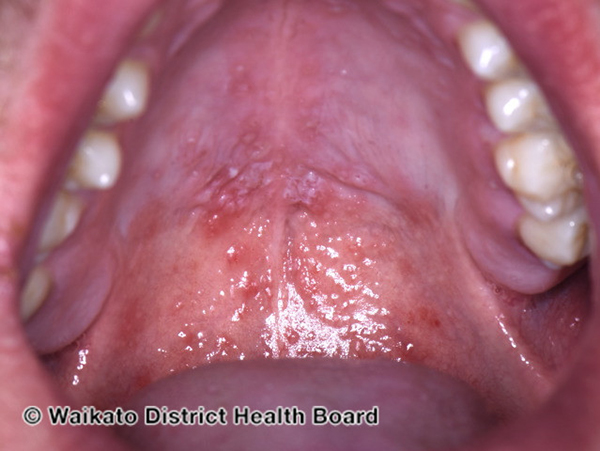

Hand, foot and mouth disease is a common viral illness in children.
Human hand, foot and mouth disease is not related to foot and mouth disease in animals.
Anyone can get hand, foot and mouth disease, but it is most common in children under 10, and particularly in pre-school children.
Hand, foot and mouth disease is more common in warm weather - usually in the summer or early autumn. But it can happen at any time of year.
Hand, foot and mouth disease spreads easily between people - it is very easy to catch.
It spreads from person to person by coughing or sneezing, or by contact with mucus, saliva, blisters or the poo of an infected person. Children can also easily catch the disease by touching things like toys and then putting their hands or toys in their mouth.
Children with hand, foot and mouth disease are most likely to spread the disease in the first week - before all the blisters have dried.
Mild fever is usually the first sign of hand, foot and mouth disease. This starts about 3 to 5 days after your child has been exposed.
Hand, foot and mouth disease is usually mild and lasts about 3 to 7 days.
As well as fever, your child may develop other symptoms.
Your child may develop painful red blisters in their mouth.
They may also have red or fluid-filled blisters. These are usually on the palms of hands or soles of feet but can be in other places on the arms and legs. They can also appear elsewhere on your child's body. These blisters are not usually itchy or painful.

Very rarely (in an outbreak or with certain types of the virus) the hand, foot and mouth virus causes a more severe rash involving more of the body, or a more serious illness including inflammation of the brain or heart.
Yes, hand, foot and mouth disease can occasionally happen more than once as there are different types of the virus that cause it.
Your family doctor can usually diagnose hand, foot and mouth disease by examining your child.
Hand, foot and mouth disease can sometimes be confused with:
Take your child to your family doctor if:
Call Healthline on 0800 611 116 if you are unsure what you should do.
Keep your child at home if they are unwell or have blisters. It is important that your child does not go back to childcare or school until all the blisters have dried.
Frequent hand washing helps decrease the chance of spreading the infection. This is because the virus is found in poo, blisters and saliva, and from a runny nose.
Take special care to wash hands:
Staying away from others who have the disease, cleaning/not sharing toys during the infection also helps prevent spread of the disease.
If your child's mouth is sore, don't give them sour, salty or spicy foods.
Make sure they have plenty to drink to stop them getting dehydrated.
If your child is miserable with hand, foot and mouth disease, you can give them paracetamol. Follow the dosage instructions on the bottle. It is dangerous to give more than the recommended dose.
No, there is no specific treatment for hand, foot and mouth disease.
Hand, foot and mouth disease is rare in healthy adults, so the risk of infection during pregnancy is very low. And if a pregnant woman gets the disease, the risk of complications is also very low.
But if you catch the virus shortly before you give birth, the infection can be passed on to your baby. Most babies born with hand, foot and mouth disease have only mild symptoms.
In very rare cases it is possible that catching hand, foot and mouth disease during pregnancy may result in miscarriage. For this reason, if you have contact with hand, foot and mouth disease while you're pregnant, or if you develop any kind of rash, see your doctor or lead maternity carer - just to be safe.
Image of blisters in the mouth reproduced from DermNet NZ [1].
This page last reviewed 18 August 2022.
Email us [3] your feedback
Links
[1] https://dermnetnz.org/topics/hand-foot-and-mouth-disease
[2] https://www.kidshealth.org.nz/node/2081
[3] https://www.kidshealth.org.nz/contact?from=http%3A%2F%2Fwww.kidshealth.org.nz%2Fprint%2F2080